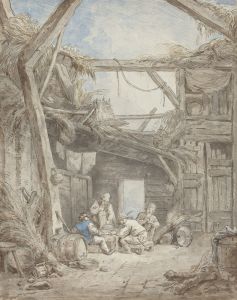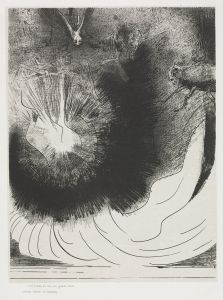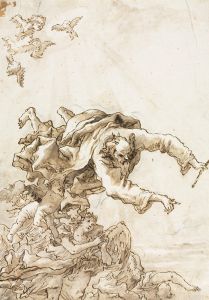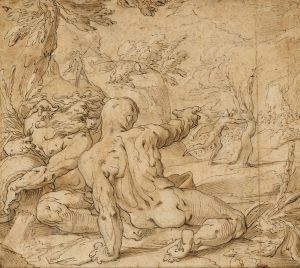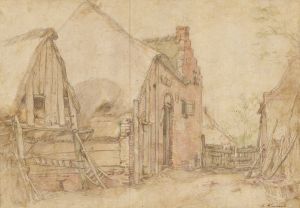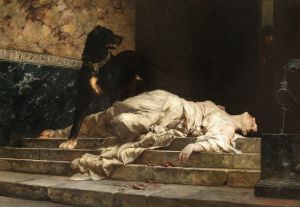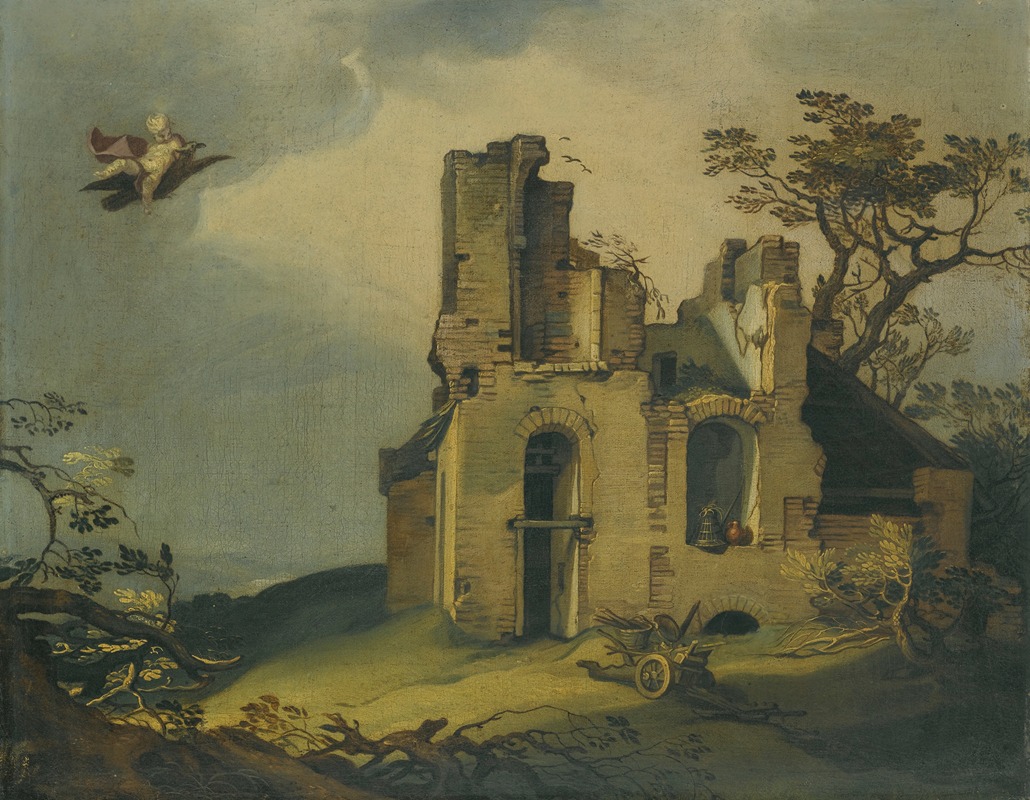
A Landscape With Ruins, With The Rape Of Ganymede
A hand-painted replica of Abraham Bloemaert’s masterpiece A Landscape With Ruins, With The Rape Of Ganymede, meticulously crafted by professional artists to capture the true essence of the original. Each piece is created with museum-quality canvas and rare mineral pigments, carefully painted by experienced artists with delicate brushstrokes and rich, layered colors to perfectly recreate the texture of the original artwork. Unlike machine-printed reproductions, this hand-painted version brings the painting to life, infused with the artist’s emotions and skill in every stroke. Whether for personal collection or home decoration, it instantly elevates the artistic atmosphere of any space.
"A Landscape With Ruins, With The Rape Of Ganymede" is a painting by the Dutch artist Abraham Bloemaert, who was a prominent figure in the Dutch Golden Age of painting. Born in 1566 and passing away in 1651, Bloemaert was known for his versatility and mastery in various genres, including history painting, landscapes, and genre scenes. His work often reflected the transition from Mannerism to Baroque, showcasing his ability to adapt to changing artistic trends.
This particular painting, "A Landscape With Ruins, With The Rape Of Ganymede," is an example of Bloemaert's skill in combining mythological themes with detailed landscape backgrounds. The painting depicts the mythological story of Ganymede, a young Trojan prince who was abducted by Zeus, who had transformed himself into an eagle. This myth was a popular subject in art and literature, symbolizing divine love and the beauty of youth.
In the painting, Bloemaert captures the dramatic moment of Ganymede's abduction. The landscape setting includes classical ruins, which were a common motif in 17th-century Dutch art, symbolizing the transience of human achievements and the passage of time. The ruins add a sense of historical depth and melancholy to the scene, contrasting with the dynamic and somewhat violent action of the abduction.
Bloemaert's use of light and shadow in the painting is notable, as it enhances the three-dimensionality of the figures and the ruins. The chiaroscuro technique, which involves the use of strong contrasts between light and dark, helps to create a sense of depth and volume. This technique was widely used during the Baroque period and is evident in Bloemaert's work.
The painting also reflects Bloemaert's interest in classical antiquity, which was a significant influence on many artists of his time. The inclusion of ruins and mythological subjects demonstrates his engagement with the classical past and its themes, which were being rediscovered and reinterpreted during the Renaissance and Baroque periods.
Abraham Bloemaert was not only a painter but also a teacher who influenced many other artists. His workshop produced several notable painters, including his sons Hendrick and Cornelis Bloemaert. His influence extended beyond his immediate circle, contributing to the development of Dutch art in the 17th century.
"A Landscape With Ruins, With The Rape Of Ganymede" is a testament to Bloemaert's ability to blend narrative and landscape, creating a work that is both visually compelling and rich in symbolic meaning. The painting is an excellent example of his mature style, characterized by its detailed execution, dramatic use of light and shadow, and incorporation of classical themes.
Today, Abraham Bloemaert's works are held in various museums and collections around the world, appreciated for their historical significance and artistic quality. "A Landscape With Ruins, With The Rape Of Ganymede" remains a notable piece within his oeuvre, illustrating his contribution to the art of the Dutch Golden Age.






